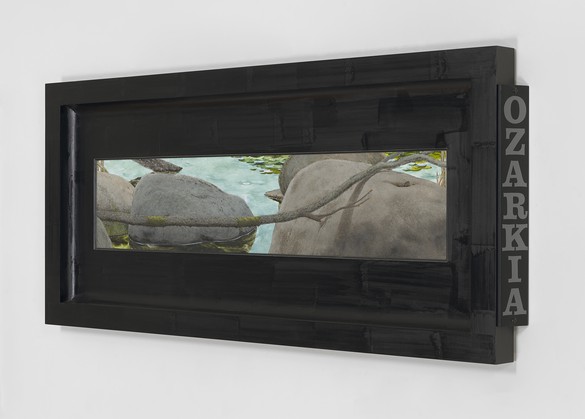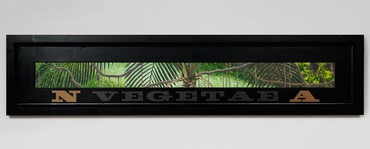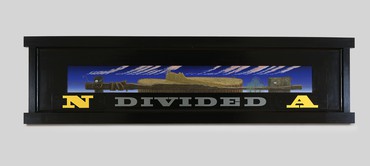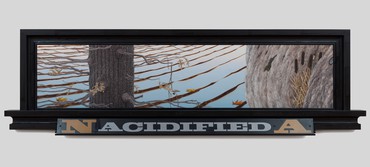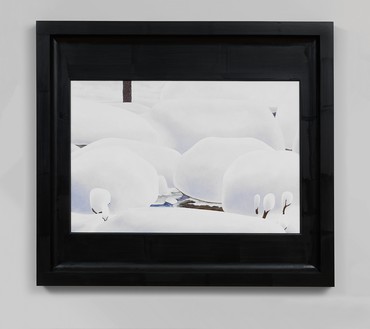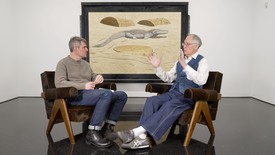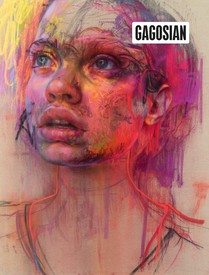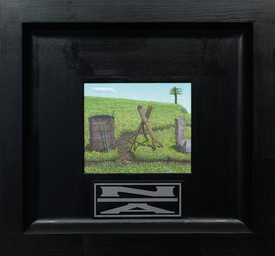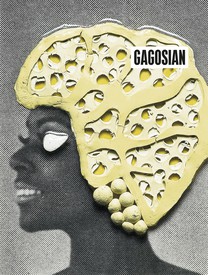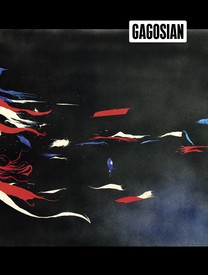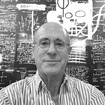
Fred Hoffman’s most recent book, The Art of Jean-Michel Basquiat, was published in 2017 by the Enrico Navarra Gallery (New York and Paris). In 2005–06 he co-curated the artist’s last American retrospective at the Brooklyn Museum, which then traveled to the Museum of Contemporary Art, Los Angeles, and the Museum of Fine Arts, Houston.
One of the problems with a catchy phrase becoming the identifying feature for a style or group of artworks is the simple truth that one size does not fit all. While these labels may facilitate a certain kind of packaging, they most often limit understanding of deeper intent. The term “bad painting,” for example, was first used as the title of a groundbreaking exhibition organized by Marcia Tucker at New York’s New Museum of Contemporary Art in 1978, a show spotlighting a group of artists who Tucker argued were deliberately disrespecting recent styles. While the concept of “bad painting” did provide a way for the art world to assimilate the radical departure of Neil Jenney’s paintings of the late 1960s, it also limited appreciation of the philosophical and psychospiritual content of these works. I have always viewed them as a fresh way to call attention to the fundamental issue of how we deal with our world and create our sense of self.
If we have come to accept that Jenney’s late-1960s paintings intentionally challenge recent art history, we have become equally comfortable labeling his more recent landscape paintings “good paintings.” From one perspective, all art that reflects an individual’s vision is inherently good. But critically speaking, the context and conclusion of being “good” dodges questions of meaning and historical relevance. As such, to label a body of work as “good painting” limits our dealing with it. In the case of Jenney’s recent art, not only does the label marginalize, it also makes it difficult to focus on what those works are really about: a penetrating exploration of the natural terrain, revealing insight into not only the world around us but our understanding of ourselves.
Of all the texts in the interestingly sparse literature on Jenney, one stands out: David Joselit’s “Neil Jenney Realism,” in Neil Jenney: Natural Rationalism, the catalogue for an exhibition at New York’s Whitney Museum of American Art in the fall of 1994. Adam Weinberg, then curator of the Whitney’s permanent collection (he is now the museum’s director), set the context in his preface:
The Jenney pieces exhibited here . . . [are] tethered to the tradition of nineteenth-century American landscape painting, especially the art of Thomas Cole. Perhaps, most significantly in regard to the tradition of American art, with Jenney’s work it seems that what you see is what you get. But it only seems that way. In fact, as David Joselit shows in his essay, Jenney’s art takes ordinary subjects and, through the combination of language and image, makes conventional meanings unstable and open to multiple interpretations.1
Joselit applies the concept of “relational realism” to Jenney’s “bad paintings,” pointing out that they are “characterized as much by the gaps and disjunctions between things as by their connections.”2 As he goes on to note of the artist’s later, more naturalistic landscapes, “Jenney makes the ordinary strange and the banal disorienting. Although the individual objects which compose [his painting] The Modern Era are ‘real,’ their relationships to one another are abstract: under the utilitarian veneer of modernity lies a disturbing incoherence.” The result for Joselit is “an effect of kinesthetic disorientation.”3 He sees the defining feature and contribution of Jenney’s landscape painting as the simultaneous presentation of two contradictory movements, one that lifts an observer out of the landscape at the same time that it pours them back into it. Linking the earlier “bad paintings” and the more naturalistic landscapes, Joselit insightfully identifies the artist’s concern with the identity and alienation of objects.
When Joselit wrote his essay, Jenney was just beginning to investigate naturalistic landscape; since the mid-1990s he has produced many more such paintings. Joselit’s perceptive discussion, then, now seems more an important starting point than a full summation. Jenney’s landscape paintings at first seem somewhat spare, but are actually abundant in their imagery and continue to present opposing forces within the same picture, as his earlier, more conceptually driven work did. Now, with the distance of time and an expanded output of paintings, we can begin to understand how Jenney’s exploration of nature takes us toward an even bigger picture, a vision of fascination and intrigue—a glimpse into the experience of wonderment.
Jenney’s vision of nature sets us in a world we have never experienced. He makes us reconsider the natural world surrounding us. Many of us have wandered far from nature, and Jenney captures something we know is there but do not see. Even for those of us who regularly, even religiously commune with nature, his depiction of the natural world is so unexpected as to make us reevaluate how we actually experience everything from flora and fauna, boulders and streams, to soaring trees, hovering clouds, and the effects of atmosphere.
In coming to grips with Jenney’s depiction of nature, it is helpful to consider both his overall choices—what he chooses to include and exclude—and the specific characteristics he has given to his subjects. He primarily focuses on the relationship between an initial group of natural elements—a mass of boulders, a grouping of tree trunks—and a more distant, expansive space. Whatever the subject, the details of its depiction suggest nature untouched, uncompromised by human interaction. Jenney’s subjects seem filled with a sense of purity.
Jenney’s specificity drives our engagement, making what is depicted intriguing and hyperreal. Each boulder in Ozarkia (2014) is painted with acute attention to the minute articulations of its surface. As our eye is attracted to even the smallest aspects of these objects, the artist makes each and every one distinct, imbuing the surfaces of large masses of rock with the rare qualities of precious stones. This subtle investigation fills the entire pictorial field. Take the twisting, undulating tree branch that extends horizontally across the entire picture plane, or the spare patches of moss on parts of the branch. We don’t simply recognize and identify these images and move on; rather, we are directed, almost forced, to focus on the specificity of the “information” depicted. This is partly because the artist has brought the foreground imagery toward the frontal edge of the pictorial field. It’s as if the boulders could spill out into our space. The frame Jenney has chosen for this work adds to this effect, its double layering functioning almost like a stop sign cautioning the eye, and then the mind, to focus on every nuance of surface articulation. This effect is further enhanced by the contrast of this heavy wooden structure and the delicate, soft, sometimes ephemeral quality of the imagery depicted. While other artists have captured the detail and minutiae of nature, Jenney stands apart in his strategic and calculated implementation of pictorial devices, many of them time tested over centuries, that drive our engagement.
To some extent, the credibility of these surfaces is achieved through Jenney’s mastery of technique, primarily his almost microscopic brushwork. One can only imagine the patience required to create these pictures. When one visits his studio, the materials and tools used to execute these works are nowhere to be seen; to my knowledge, Jenney paints in complete privacy. His process must be slow and tedious, using many repeated strokes to build up the images. Paint application this precise requires a commitment of months to execute a single work, and a pictorial process rare among contemporary artists.
Jenney implements other pictorial devices to involve us in his paintings. In two of his most recent works, North America Acidified (1985–86/2012–13) and North America Depicted (2014–17), and in the earlier North America Vegetae (2006–07), the viewer is asked to peer into a long, narrow expanse of space whose imagery presses up against the picture plane. The pictorial space behind this frontal edge is a luminous field filled with subtle gradations of soft, warm, inviting color. Jenney’s atmospheres take us far from where we “enter” the picture—we never feel that there is an end, always sensing that we are invited to keep going farther and deeper in. Whether grouping long narrow tree trunks from the bottom to the top of the picture, filling part of the pictorial field with large boulders, as in Ozarkia, or articulating a pattern of tropical leaves to hover across the entire width of the painting directly behind thin, undulating tree branches that also fill the field, Jenney gives his subjects an inescapable presence.
Jenney’s framing devices play a critical role in his effects. This artist has learned well from the masters of art history. Think of Bellini’s altarpiece in the Basilica di Santa Maria Gloriosa dei Frari, Venice (1488), where the objectlike nature of the framing devices both separate us from the heavenly figures of the Madonna and child and at the same time function as the vehicle inviting us in to experience this other world. In Veronese’s grand Feast in the House of Levi (1573; now in the Accademia in Venice), the actual frame, complemented by the architectural elements depicted in the painting, serves a similar function of separation and inclusion. I would suggest that a similar mindset drives Jenney. His thick, wide, heavy structures function as window frames onto another world. While these objects might initially feel intimidating, as if they were declaring “stand back” or “do not enter,” Jenney’s imagery is just too alluring—we let go of any resistance and embrace our sensory/sensual desire to reach into these pictures and touch the artist’s natural forms. To the degree that Jenney’s frames are objectlike, sometimes even overbearing in their weightiness, his work separates itself from that of other painters focused on the natural world. Some of his frames even remind me of the severity of Donald Judd’s Minimalism, as if Jenney’s roots in that movement were coming through. But more than this point of reference, Jenney’s pictorial solutions remind me of the conceptual and strategic devices implemented by those Renaissance masters who understood that the frame could function as the declarative link between our lived-in world and the fiction represented “behind” it.
As we “enter” the pictures, we recognize that what we are witnessing is something other than nature as we normally experience it: rather, Jenney’s presentation of nature transforms it, making it almost magical. Nature here is not simply credible but extraordinary. Jenney’s scenes do not tell a story, they feel frozen in time. While we believe in them as depicting what we see in nature, they might just as easily show a reality beyond the observable physical universe.
With their ever inviting luminosity, reminiscent of Venetian Renaissance masters, Jenney’s landscapes give new credibility and legitimacy to realism. These pictures hardly feel traditional. In combining an astute understanding of the history and techniques of painting with his intellectual roots in the Minimal and Conceptual practices of the late 1960s and early 1970s, Jenney offers a unique vision of both nature and the natural world.
Immersion in Jenney’s landscapes reminds me of T. S. Eliot’s “Burnt Norton” (1935):
At the still point of the turning world. Neither flesh nor
fleshless;
Neither from nor towards; at the still point, there the dance
is,
But neither arrest nor movement. And do not call it fixity,
Where past and future are gathered. Neither movement
from nor towards,
Neither ascent nor decline. Except for the point, the still
point. . . .
Time past and time future
Allow but a little consciousness.
To be conscious is not to be in time
But only in time can the moment in the rose-garden,
The moment in the arbour where the rain beat,
The moment in the draughty church at smokefall
Be remembered: involved with past and future.
Only through time time is conquered.4
North America Depicted (2009–10) is somewhat of an anomaly in Jenney’s oeuvre, an almost all-white work that suggests the minimal abstraction of Robert Ryman. A series of snow-covered boulders progresses from the foreground back into a deeper space. Using the subtlest modulation of hue, Jenney makes each form distinct, yet simultaneously creates an overall homogeneity. Interspersed between these frozen masses are spare pockets of open space, barely recognizable as a body of water. At the top of the work, beyond the configuration of hovering snow-capped mounds, Jenney has painted a single spare tree trunk. Running up to the top edge of the picture and to the heavy picture frame, this small lone form brings the viewer’s attention back to the foreground, linking the scene depicted to a physical reality. It grounds us, preventing the mind from becoming lost as the eye meanders through this inviting experience in nature.
While the eye is generously invited to move through the picture, the work conveys stillness. More than simply depicting something frozen, it suggests a suspension of time. Like Eliot’s line about “the still point of the turning world,” Jenney’s winter scene captures that moment where both past and future are put aside, the viewer residing in the moment. No longer viewing nature as we have known it, we are presented with a sacred space.
1Adam Weinberg, in Neil Jenney: Natural Rationalism, exh. cat. (New York: Whitney Museum of American Art, 1994), p. 1.
2David Joselit, “Neil Jenney’s Realism,” in ibid., p. 4.
3Ibid., p. 7.
4T. S. Eliot, “Burnt Norton,” in Four Quartets, first published between 1936 and 1942 (New York: Harcourt, 1971), pp. 15–16.
Artwork © Neil Jenney; photos: Rob McKeever unless otherwise noted
